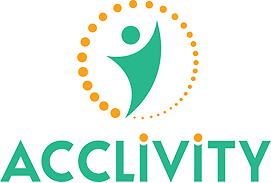It’s natural to assume that everyone will be on the same page on anything, even something as sticky as political divisions. But it’s not the case, and career advancement in higher education is no exception. Getting trapped is easy, and avoiding it is even harder. But there are some things to look out for that can help.
Office Politics Described
Office politics can be best described as an unmitigated use or abuse of power through social networking or social relations in a self-serving manner. The goal is to gain favorable or preferential treatment, and this type of behavior is done with the intention of harming team members or other employees. Navigating political divides in the office requires awareness, and that must be done in order to achieve career advancement in higher education.
According to Robert Birnbaum, there are four distinct categories of politics in academia:
- Collegial
- Bureaucratic
- Political
- Anarchical
Each Model Explained
To avoid the pitfalls of political divides in higher education careers, we need to first examine the four models for academia and describe them briefly. Each has a need for positive academic networking skills in order to gain something positive and avoid potential pitfalls.
A collegial model is one that values all opinions and not just one. Group consensus is valued over individual input and some healthy debate is even encouraged to a degree. Bureaucratic models are similar but they rely more on hierarchies than just groups. Decisions are made based on a specific chain of command that flows either outwards or downwards. The only problem is that authority can overlap when some deny responsibility for decision making and shift responsibility onto others.
Political models also have subgroups but there can be some differences among them. These differences typically lie among leaders who must compromise among themselves based on how they relate to each other rather than set corporate standards. Any dissent among leaders must get resolved so that a consensus can be reached. In higher education, academic networking among individual departments is required in order to make this model work efficiently. That is the best standard to avoid a major pitfall.
Anarchical models are considerably more complex and often lack strong leadership. There are times when overlap can go viral to the point where an entire infrastructure will eventually crumble. The best way to navigate the red tape in this intricate system is for a good leader to step up and foster improved communication and better cooperation among groups. This approach is much better than just blindly giving orders.
Conclusion
There are many major downsides to politics in the workplace. One is a decline in productivity, which stems from distraction. This happens when political discussions become so heated that they lead to a toxic work environment. Another involves overt feuds where groups become divided over certain sensitive topics.
Human resource managers should be trained to stop conflict before it escalates, as failure to do so results not only in decreased productivity but higher turnover rates and severe mental distress among employees. But when your health is affected, it’s best to seek professional help before things get worse.
To learn more about how Dr. Loren M. Hill can help you in your academic career, schedule your call today!

